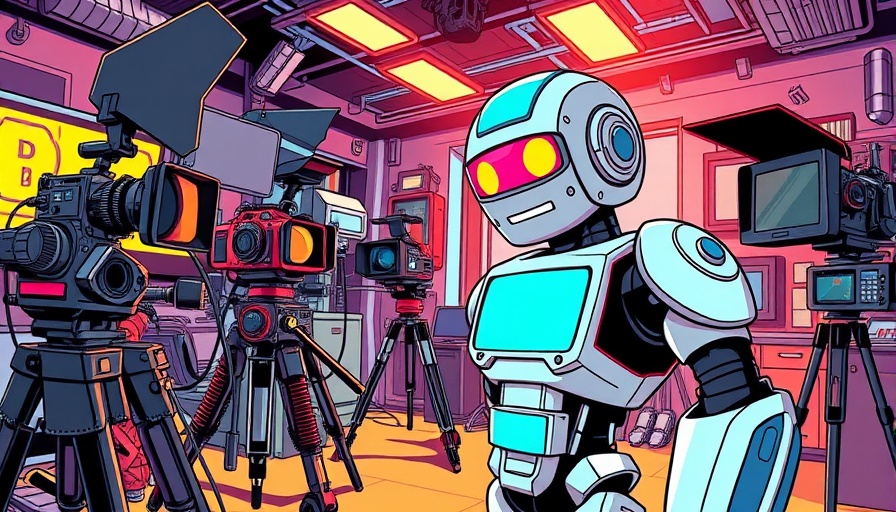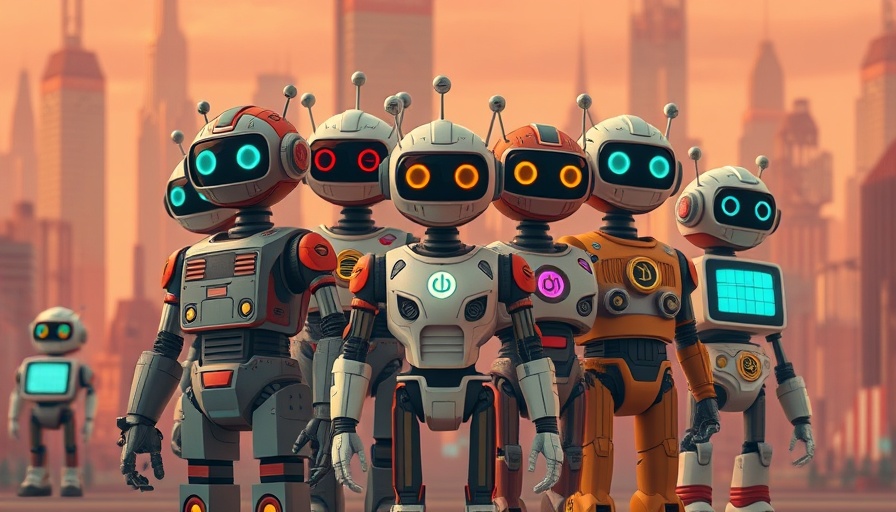
AI-Driven Films: A New Creative Frontier
The advent of artificial intelligence (AI) is transforming various industries, and the film sector is no exception. The recent announcement of OpenAI backing a feature film titled Critters marks a significant experiment in blending technology with storytelling. As business owners and creatives alike seek to navigate this evolving landscape, understanding the implications of such advancements is crucial.
In 'ChatGPT Makes a Movie,' the discussion dives into the integration of AI in filmmaking, exploring key insights that sparked deeper analysis on our end.
A Visionary Concept Turns into Reality
OpenAI's venture with Critters, which explores the adventures of forest creatures disrupted by an outsider, signifies an exciting evolution in filmmaking. Creative specialist Chad Nelson, who conceptualized the characters using OpenAI's original tools, is set to launch this project in a mere nine months, distinctively shorter than the typical three-year production span for animated films. This ambitious timeline and modest $30 million budget feature an innovative integration of AI tools in character design and animation, with human actors portrayed in pivotal roles.
Power of AI in Filmmaking: Insights and Applications
What stands out about this project is the intention to showcase AI capabilities within a professional setting. As Nelson aptly states, it is more impactful to demonstrate AI tools in action than to articulate their benefits through mere marketing. For business owners, this begs the question: How can similar AI applications streamline production processes and reduce operational costs?
Embracing AI in creativity could enhance efficiency. Traditional timelines may shift as production methods evolve, potentially reshaping the entire creative industry. Filmmakers can harness AI not to replace human artistry but to facilitate faster production cycles while ensuring quality output.
Counterarguments: Balancing Tradition with Innovation
While the AI trend in filmmaking presents opportunities, there remains skepticism about reliance on technology. As pointed out by investor Hersh Desai, the project must be evaluated on its merits as a film, not just as an AI-driven creation. Indeed, audiences are likely to judge the final product on storytelling and engagement rather than the tools used in its creation. This emerging hesitation is not unfounded, as some industry professionals fear that over-reliance on AI could compromise artistic integrity. How then, can filmmakers balance innovation while preserving their creative voice?
Industry Impacts: The Changing Landscape
The underlying question for industry stakeholders is: What does the future hold when AI is integrated alongside human creativity? If successful, Critters may set a precedent for other studios to follow. Emerging technologies could streamline workflows, allowing creative teams to produce more dynamic content faster while potentially attracting new forms of revenue. This shift not only reflects technological advancement but also creates new job opportunities in design, programming, and AI management.
Engaging with AI: Practical Insights for Business Owners
For business owners looking to harness the power of AI, starting with small-scale applications can offer valuable insights. Consider implementing AI tools that facilitate project management, creative processes, or consumer engagement. Initiating AI reviews can help ensure quality across products and services while identifying areas ripe for innovation. Could experimenting with AI in your operations unlock new avenues for growth?
Act Now: Embrace AI Technology
As the launch of Critters approaches, it unfolds as a beacon of exploration in the intersection of creativity and technology. For business owners who comprehend the potential of AI, the time is now to leverage these advancements. Do not wait for trends to dictate market movement but rather step forward by integrating AI tools into your business model. Whether it's through film, marketing, or process automation, AI presents opportunities waiting to be tapped.
In conclusion, AI isn’t merely a tool for efficiency; it can revolutionize how stories are told and products are marketed. With projects like Critters paving the way, embracing this technology could yield fruitful results for those willing to adapt.
 Add Row
Add Row  Add
Add 




Write A Comment